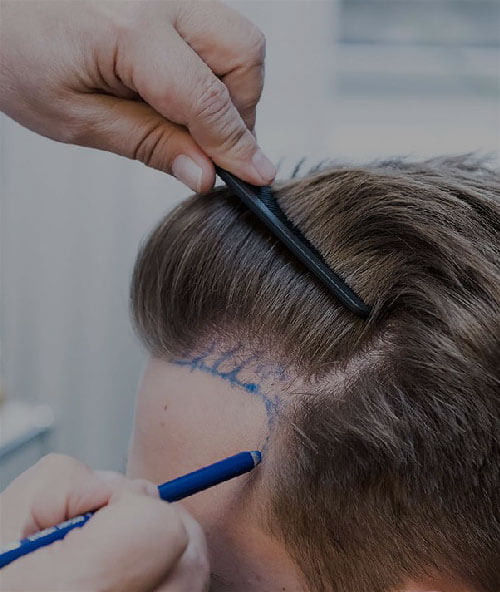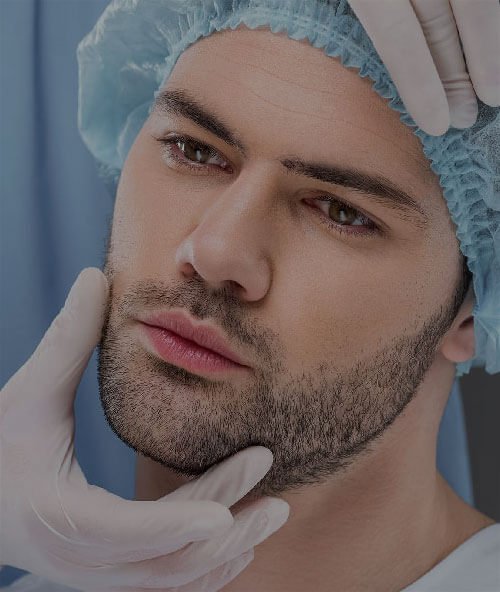Hair Loss Treatments
Introduction to Hair Loss
Hair loss, a concern affecting millions worldwide, is a condition that transcends age, gender, and ethnicity. It’s not just a cosmetic issue but can significantly impact an individual’s psychological well-being and quality of life. Understanding hair loss is the first step towards effective management and treatment.
Overview of Hair Loss
Hair loss, medically known as alopecia, can range from mild thinning to complete baldness. It’s a natural phenomenon in many cases, with the average person losing between 50 to 100 hairs a day. However, when hair loss exceeds this normal shedding, it becomes a matter of concern.
This condition can manifest in various patterns. While some people experience a gradual thinning on top of their head, commonly seen in aging men and women, others may lose hair in patches or have a receding hairline, more frequently observed in men. Complete baldness is rare but can result from certain medical conditions or treatments.
Common Causes and Types of Hair Loss
- Genetics: The most common cause of hair loss is a hereditary condition called male-pattern baldness or female-pattern baldness. It usually occurs gradually with aging and in predictable patterns.
- Hormonal Changes and Medical Conditions: Various conditions can cause permanent or temporary hair loss. These include hormonal changes due to pregnancy, childbirth, menopause, and thyroid problems. Medical conditions like alopecia areata, which causes patchy hair loss, scalp infections like ringworm, and diseases such as lupus and diabetes.
- Medications and Supplements: Hair loss can be a side effect of certain drugs, such as those used for cancer, arthritis, depression, heart problems, gout, and high blood pressure.
- Stressful Events: Many people experience a general thinning of hair several months after a physical or emotional shock. This type of hair loss is temporary.
- Hairstyles and Treatments: Excessive hairstyling or hairstyles that pull your hair tight, such as pigtails or cornrows, can cause a type of hair loss called traction alopecia. Hot oil hair treatments and permanents can cause inflammation of hair follicles that leads to hair loss.
- Nutritional Deficiencies: Lack of certain nutrients in the diet, like iron, protein, and vitamins, can also lead to hair thinning. Understanding the underlying cause of hair loss is crucial in determining the most effective treatment approach.
Related Article: What Vitamin Deficiency Causes Hair Loss?
Hair Loss in Men and Women
Hair loss, while a common issue, manifests differently in men and women, influenced by a variety of factors including genetics, hormones, and age. Understanding these differences is key to identifying the right treatment approach.
Understanding Male Pattern Baldness
Male pattern baldness, also known as androgenetic alopecia, is the most common type of hair loss in men. It typically follows a pattern of receding hairline and hair thinning on the crown, and is often related to hormones called androgens, particularly dihydrotestosterone (DHT).
This condition can start as early as the teenage years and the risk increases with age; it’s estimated that more than 50% of men over 50 will be affected by male pattern baldness.
Genetics play a significant role in male pattern baldness. Men who have close relatives with male pattern baldness are at a higher risk. The condition is characterized by hair follicles shrinking over time, resulting in shorter and finer strands of hair, and eventually, these follicles stop producing hair altogether.
Exploring Hair Loss in Women
Hair loss in women, often more diffuse than in men, can significantly impact self-esteem and emotional well-being. Female pattern hair loss usually involves a general thinning across the scalp, with the most extensive hair loss at the crown.
Does Menopause Cause Hair Loss?
Menopause-related hair loss is another common issue women face. The hormonal changes during menopause can lead to thinning hair and increased hair shedding. Lower levels of estrogen and progesterone, which help hair grow faster and stay on the head for longer periods, can lead to hair growing slower and becoming much thinner. A rise in androgens, or male hormones, can also contribute to hair loss in women during this phase.
Unlike men, women rarely go completely bald, but they may experience significant thinning of hair. Other factors contributing to hair loss in women include stress, diet, and certain medical conditions and treatments.
Understanding the nature of hair loss in both men and women is crucial for effective treatment. While some treatments are suitable for both, others are gender-specific, addressing the unique hormonal and genetic factors at play.
The next sections will delve into the various treatment options available, offering hope and solutions for those dealing with hair loss.
Diagnosing Hair Loss
Proper diagnosis is a critical step in the effective treatment of hair loss. Understanding the underlying cause of hair loss is essential for determining the most appropriate treatment plan.
How is Hair Loss Diagnosed?
The process of diagnosing hair loss typically begins with a thorough medical history and physical examination. Here are some key aspects of the diagnostic process:
- Medical History: This involves discussing your health history, including any major illnesses, surgeries, and the medications you’re taking. Your doctor will also ask about your diet, hair care routine, and whether you’ve had a recent illness or high levels of stress.
- Physical Examination: The doctor will examine your scalp to determine the pattern and extent of hair loss. This helps in identifying the type of hair loss – whether it’s thinning, patchy, or involves other scalp conditions.
- Hair Pull Test: A simple and effective test where several dozen hairs are gently pulled to see how many come out. This helps determine the stage of the shedding process.
- Scalp Biopsy: In some cases, a scalp biopsy may be necessary to determine if the hair loss is caused by an infection or other underlying condition. A small section of the scalp skin is removed and examined under a microscope.
- Blood Tests: These can help uncover medical conditions related to hair loss, such as thyroid disease, iron deficiency, or hormonal imbalances.
The Role of Dermatologists in Hair Loss Treatment
Dermatologists play a pivotal role in both diagnosing and treating hair loss. As specialists in skin, hair, and nail disorders, they are uniquely qualified to assess hair loss. Here’s how dermatologists contribute to the treatment of hair loss:
- Expert Diagnosis: Dermatologists can accurately diagnose the type of hair loss and its cause, which is crucial for effective treatment.
- Personalized Treatment Plans: Based on the diagnosis, dermatologists can create a personalized treatment plan. This may include medications, topical treatments, lifestyle changes, or procedural options like hair transplant surgery.
- Monitoring Progress: They monitor the patient’s progress and can adjust the treatment plan as needed. This is important as the response to treatment can vary among individuals.
- Addressing Underlying Issues: Dermatologists can also identify and treat any underlying skin conditions or diseases contributing to hair loss.
- Emotional Support and Guidance: Understanding the psychological impact of hair loss, dermatologists can provide emotional support and guide patients through the treatment process, helping them set realistic expectations.
In summary, the diagnosis of hair loss involves a comprehensive approach, and dermatologists are key players in both diagnosing and managing hair loss effectively. The next sections will explore various treatment options available for hair loss, tailored to the specific needs and conditions of everyone.
Comprehensive Guide to Hair Loss Treatments
Medicine Treatments
In the realm of medical interventions for hair loss, there are several FDA-approved and widely prescribed treatments. These treatments work by targeting different aspects of the hair growth cycle, aiming to either slow down hair loss or stimulate new growth. While some are topical solutions applied directly to the scalp, others are oral medications.
It’s important to understand that results can vary, and these treatments often require ongoing use to maintain their effects. Potential side effects are also a consideration, and it’s crucial to discuss these with a healthcare provider to make an informed decision.
Natural and Alternative Remedies
Moving away from conventional medicine, there’s a growing interest in natural and alternative remedies for hair loss. This includes the use of herbal supplements, essential oils, and other natural products. While some individuals report positive results, it’s important to approach these remedies with a degree of caution.
The efficacy of such treatments can vary, and they are not typically regulated with the same rigor as conventional medicines. Integrating these natural remedies with traditional treatments can be an option, but it’s advisable to consult with a healthcare professional before doing so to avoid any potential interactions or side effects.
Hair Transplant Surgery and Other Procedural Options
For those seeking more permanent solutions, hair transplant surgery and other procedural options are available.
Hair transplant techniques, such as Follicular Unit Extraction (FUE) and Follicular Unit Transplantation (FUT), involve the relocation of hair follicles from one part of the scalp to another. These procedures have evolved significantly, offering more natural-looking results than ever before. You can check out our hair transplant in Turkey before and after page for real case solutions.
Discover the best hair transplantation tecniques!
Related Articles:
Other options include scalp reduction and laser therapy, which can also be effective in certain cases. As with any surgical procedure, there are risks and benefits to consider, and a thorough consultation with a qualified specialist is essential.
Related Articles:
Emerging Treatments and Research
The field of hair loss treatment is continually evolving, with ongoing research and emerging treatments offering new hope. This includes advancements in the understanding of genetic factors influencing hair loss, development of new drug therapies, and innovative surgical techniques.
Research into stem cell therapy and cloning of hair follicles is particularly promising, potentially revolutionizing the approach to treating hair loss in the future. Staying informed about these developments is important for anyone interested in the latest treatment options.
Special Focus: Hair Loss Treatment for Women
Hair loss in women, often shrouded in more stigma and emotional distress than in men, requires a nuanced understanding and approach. This section delves into the unique aspects of female hair loss and the specific treatments that can be effective for women.
Unique Aspects of Female Hair Loss
Female hair loss can manifest differently than in men, often characterized by overall thinning rather than a receding hairline or bald spot. This thinning can be more diffuse, making it less noticeable in the early stages but potentially more distressing as it progresses.
The causes of hair loss in women are varied, including hormonal changes (such as those experienced during menopause), medical conditions, nutritional deficiencies, and stress.
Another key aspect is the emotional impact of hair loss, which can be more pronounced in women due to societal pressures and ideals surrounding feminine beauty and hair.
Understanding these emotional dimensions is crucial in treating hair loss in women, as it affects not only their physical appearance but also their psychological well-being.
Specific Treatments Effective for Women
The treatment of hair loss in women often involves a multi-faceted approach, tailored to the individual’s specific condition and needs. Here are some of the effective treatments:
- Topical Treatments: Certain over-the-counter and prescription topical treatments can be effective, especially those formulated to stimulate hair growth or prevent further thinning.
- Hormonal Therapies: Since hormonal imbalances often contribute to hair loss in women, treatments that balance hormones can be effective. This includes therapies for thyroid disorders, hormone replacement therapy for menopausal women, or medications that address specific hormonal issues.
- Nutritional Interventions: Addressing nutritional deficiencies through diet changes or supplements can help improve hair health. Ensuring adequate intake of iron, protein, and essential vitamins is often recommended.
- Stress Management: Given the link between stress and hair loss, stress reduction techniques such as yoga, meditation, and counseling can be beneficial.
- Hair Transplant Surgery for Woman: While traditionally more common in men, hair transplant techniques have also evolved to be effective for women, particularly for those with certain patterns of hair loss.
- Laser Therapy: Low-level laser therapy, which stimulates hair follicles, can be an option for some women, especially those who cannot use certain medications.
- Alternative Remedies: Some women find success with natural and alternative remedies, though it’s important to approach these with caution and consult a healthcare professional.
In summary, treating hair loss in women requires a comprehensive approach that addresses not only the physical aspects of hair loss but also the emotional and psychological impacts. It’s important for women experiencing hair loss to consult with healthcare professionals who understand these unique aspects and can provide a treatment plan that is both effective and sensitive to their needs.
Understanding and Managing Alopecia
Alopecia, a term for hair loss, comes in various forms, each with its own characteristics and treatment approaches. Understanding these types can help in managing the condition more effectively.
Types of Alopecia and Their Characteristics
- Androgenetic Alopecia: Often known as male or female pattern baldness, this is the most common type. In men, it manifests as a receding hairline and bald spots, while in women, it typically presents as overall thinning.
- Alopecia Areata: This autoimmune disorder causes sudden hair loss that appears as one or more round bald patches on the scalp and possibly other areas of the body.
- Alopecia Totalis: A more advanced form of alopecia areata, leading to total hair loss on the scalp.
- Alopecia Universalis: The most severe form of alopecia areata, resulting in hair loss across the entire scalp and body.
- Traction Alopecia: Caused by physical stress on hair follicles, often due to tight hairstyles, leading to hair loss primarily around the hairline.
- Cicatricial Alopecia (Scarring Alopecia): This rare form involves inflammation that destroys hair follicles and replaces them with scar tissue, resulting in permanent hair loss.
Related Content: How To Stop Alopecia Areata from Spreading?
Treatment Options for Alopecia
The treatment for alopecia varies depending on the type and severity of the condition:
- Topical Treatments: For mild cases, especially in alopecia areata, topical treatments can help stimulate hair growth.
- Corticosteroids: These anti-inflammatory drugs are commonly used for alopecia areata and can be administered as injections, oral pills, or topical ointments.
- Immunotherapy: Used in severe cases of alopecia areata, this treatment involves stimulating the immune system to allow hair regrowth.
- Minoxidil (Rogaine): Often recommended for androgenetic alopecia, this over-the-counter treatment can slow hair loss and promote regrowth.
- Hair Transplant Surgery: Suitable for some types of androgenetic alopecia, this involves transplanting hair follicles from one part of the scalp to the balding areas.
- Lifestyle Modifications: For traction alopecia, changing hair care practices and avoiding tight hairstyles can prevent further hair loss.
- Scalp Prostheses and Wigs: In cases of irreversible alopecia, like cicatricial alopecia, scalp prostheses and wigs can be effective cosmetic solutions.
- Psychological Support: Given the emotional impact of alopecia, counseling and support groups can be beneficial.
It’s important to note that the effectiveness of these treatments can vary, and what works for one person may not work for another. Consulting with a dermatologist or a hair loss specialist is crucial to determine the most appropriate treatment plan based on the type of alopecia and individual circumstances.
Lifestyle and Home Remedies
Adopting a healthy lifestyle and proper hair care routine can play a significant role in maintaining hair health and preventing further hair loss. This section focuses on diet and nutrition for healthy hair and offers practical hair care tips.
Diet and Nutrition for Healthy Hair
The health of your hair is closely linked to your overall nutrition. Consuming a balanced diet rich in key nutrients can promote hair growth and strength. Here are some essential nutrients and their food sources:
- Protein: Hair is primarily made of protein, making adequate protein intake crucial. Include lean meats, fish, soy, eggs, and dairy products in your diet.
- Iron: Iron deficiency is a common cause of hair loss, especially in women. Good sources of iron include red meat, spinach, lentils, and fortified cereals.
- Vitamins A and C: These vitamins aid in the production of sebum, the oily substance that moisturizes the scalp. Carrots, sweet potatoes, spinach, and kale are rich in Vitamin A, while citrus fruits, strawberries, and bell peppers are excellent sources of Vitamin C.
- Omega-3 Fatty Acids: They help keep hair hydrated. Foods rich in Omega-3 include fatty fish like salmon, mackerel, and sardines, as well as flaxseeds and walnuts.
- Biotin: A B-vitamin known for its hair benefits, biotin can be found in almonds, eggs, onions, and whole grains.
- Zinc: Essential for hair tissue growth and repair. Foods like oysters, beef, pumpkin seeds, and lentils are great sources.
Hair Care Tips to Prevent Further Hair Loss
In addition to a nutritious diet, proper hair care is vital in preventing further hair loss:
- Gentle Styling: Avoid tight hairstyles that pull on the hair like tight ponytails, braids, or buns. Use a wide-toothed comb to prevent pulling and breaking of hair.
- Avoid Harsh Treatments: Minimize the use of hot styling tools and harsh chemical treatments like perms and bleaching.
- Scalp Massage: Regularly massaging the scalp can stimulate blood flow to the hair follicles, promoting growth. Use gentle, circular motions with your fingertips.
- Use Mild Hair Care Products: Choose shampoos and conditioners that are suitable for your hair type. Avoid products with harsh chemicals like sulfates and parabens.
- Reduce Stress: Chronic stress can contribute to hair loss. Engage in stress-reducing activities like yoga, meditation, or regular exercise.
- Avoid Smoking: Smoking can accelerate hair loss by reducing blood flow to the scalp.
- Stay Hydrated: Adequate hydration is key to maintaining healthy hair. Aim to drink at least eight glasses of water a day.
By incorporating these dietary and hair care practices into your daily routine, you can help maintain the health of your hair and potentially reduce the rate of hair loss.








